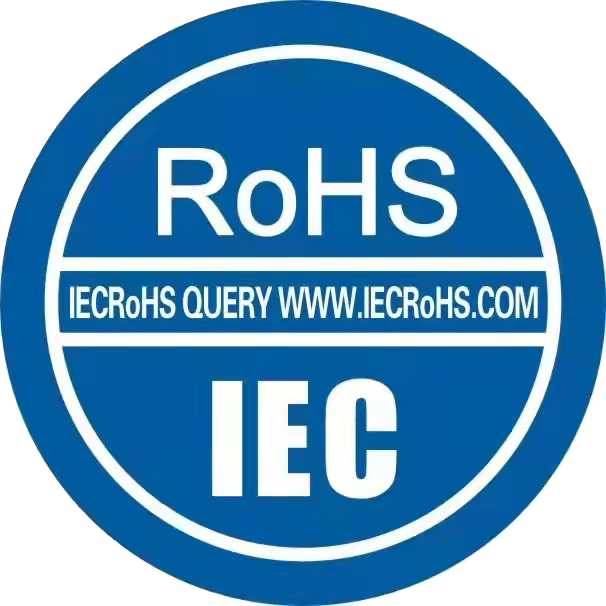RoHS Test: A Comprehensive Guide to Compliance and Environmental Safety
In today’s globally connected manufacturing landscape, the RoHS test stands as a critical checkpoint for electronic and electrical equipment. RoHS, which stands for the Restriction of Hazardous Substances, is a directive originally established by the European Union to control the use of specific hazardous materials found in electrical and electronic products. A RoHS test is the analytical process used to verify that a product complies with this directive by ensuring its concentration levels of restricted substances are below the mandated thresholds. For any business aiming to sell its products in the EU and many other regions that have adopted similar regulations, understanding and passing the RoHS test is not just a legal formality but a fundamental requirement for market access and demonstrating environmental responsibility.
What is the RoHS Directive?
The RoHS Directive, first enacted in 2003 and known as Directive 2002/95/EC, has undergone updates, with the current version often referred to as RoHS 3 or Directive 2015/863. Its primary objective is to minimize the environmental impact and health risks associated with the disposal of electronic waste (e-waste). By restricting the use of certain hazardous substances, the directive aims to make the manufacturing of electronic goods safer and their recycling process less toxic. The substances currently restricted under RoHS 3, along with their maximum permitted concentrations by weight in homogeneous materials, are: Lead (0.1%), Mercury (0.1%), Cadmium (0.01%), Hexavalent Chromium (0.1%), Polybrominated Biphenyls (PBB) (0.1%), Polybrominated Diphenyl Ethers (PBDE) (0.1%), Bis(2-Ethylhexyl) phthalate (DEHP) (0.1%), Butyl benzyl phthalate (BBP) (0.1%), Dibutyl phthalate (DBP) (0.1%), and Diisobutyl phthalate (DIBP) (0.1%).
Why is a RoHS Test Essential?
Conducting a RoHS test is essential for several compelling reasons. Firstly, it is a legal requirement for market access. Non-compliant products cannot be legally sold or distributed within the European Union and other adhering markets, which now include regions like the United Arab Emirates, China (China RoHS), and California (Proposition 65). Secondly, it is a powerful tool for risk mitigation. By identifying hazardous substances in components and finished products early in the design and production process, companies can avoid costly recalls, legal penalties, and reputational damage. Furthermore, a RoHS test serves as a strong statement of corporate social responsibility. It demonstrates a company’s commitment to consumer safety and environmental stewardship, enhancing brand image and appealing to the growing market of eco-conscious consumers.
The RoHS Testing Process: A Step-by-Step Overview
The process of a RoHS test is meticulous and is typically carried out in accredited third-party laboratories. It begins with product disassembly, where the product is broken down into its individual homogeneous materials—materials that cannot be mechanically disjointed into different materials. Samples from each of these materials, such as plastics, metals, solders, paints, and cables, are then prepared for analysis. The core of the RoHS test involves advanced analytical techniques. X-Ray Fluorescence (XRF) spectrometry is the most common screening method due to its non-destructive and rapid nature. For definitive, quantitative analysis, techniques like Inductively Coupled Plasma (ICP) for metals and Ion Chromatography or Gas Chromatography-Mass Spectrometry (GC-MS) for phthalates and brominated flame retardants are employed. The laboratory then compares the results against the maximum concentration values and issues a certificate of compliance or a detailed test report.
Who Needs RoHS Testing and Compliance?
The scope of who needs RoHS compliance is broad. It applies to manufacturers, importers, distributors, and authorized representatives of Electrical and Electronic Equipment (EEE) that fall within the directive’s categories. These categories encompass a vast range of products, including large and small household appliances, IT and telecommunications equipment, consumer electronics, lighting equipment, power tools, toys, leisure and sports equipment, and medical devices (with some exemptions). Essentially, if a company places any EEE product on the EU market, it is responsible for ensuring that product has passed the necessary RoHS tests and that the appropriate documentation, including the Declaration of Conformity, is available.
Preparing for a RoHS Test: Tips for Manufacturers
Successful RoHS compliance starts long before a sample is sent to a lab. Manufacturers can take proactive steps to streamline the process. The most effective strategy is to implement a robust supply chain management system. This involves collecting full material declarations (FMDs) and certificates of compliance from all component suppliers. Maintaining a comprehensive Bill of Materials (BOM) and tracking the compliance status of each part is crucial. Partnering with a reputable and accredited testing laboratory is also vital. Furthermore, considering RoHS compliance during the product design phase—a practice known as Design for Environment (DfE)—can eliminate potential hazards from the outset, making the final RoHS test a formality rather than a hurdle.
Conclusion
The RoHS test is far more than a regulatory obstacle; it is a cornerstone of sustainable and responsible manufacturing in the electronics industry. It protects end-users, safeguards the environment from toxic e-waste, and ensures a level playing field for businesses committed to high standards of safety and quality. By thoroughly understanding the requirements, diligently managing the supply chain, and engaging with competent testing services, companies can navigate the complexities of RoHS compliance, gain access to global markets, and build a reputation as a trustworthy and environmentally conscious brand.
Disclaimer
The information provided in this article is for general informational and educational purposes only and does not constitute professional legal or regulatory advice. The RoHS directive and its interpretations are subject to change. While we strive to provide accurate and up-to-date information, we make no representations or warranties of any kind, express or implied, about the completeness, accuracy, reliability, suitability, or availability of the content herein. You should not rely on this information as a substitute for consulting with qualified professionals who are familiar with your specific situation and the applicable laws in your jurisdiction. The author and the publishing platform expressly disclaim any liability for any actions taken or not taken based on the contents of this article.

